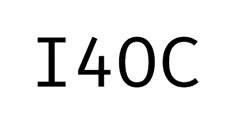Evaluation, diagnosis and psychological treatment in a case of body dysmorphic disorder
Keywords:
Body dysmorphic disorder, Case study, Cognitive behavioral therapy, Evaluation, Diagnosis, Treatment, Psychotherapy, Cognitive restructuring, Psychological mediationAbstract
Introduction: Body Dysmorphic Disorder (BDD) is a disabling mental condition that generates concern for body image. The objective was to describe the evaluation, diagnosis and treatment of a case of BDD. Materials and methods: observational, descriptive, clinical case study. The evaluation instruments were: the questionnaire Dysmorphic Concern Questionnaire, Body Dysmorphic, the Disorder Modification, and the Goldberg General Health Questionnaire; applied during the second week (test), sixth week (retest) and ninth week (follow-up). For the diagnosis, the Body Dysmorphic interview, expert judgment and structured interviews were used. For the treatment, a model of psychological mediation, cognitive behavioral therapy was included Expert judgment and structured interviews. The treatment included a model of psychological mediation and a model of cognitive behavioral therapy, with training techniques in relaxation, in vivo exposure and cognitive restructuring. The charts and tables were made with the free program of excel 2010. Results: Cognitive and behavioral strategies were included. The patient learned to test his beliefs about body image, through social experiments, modified his worries and behaviors towards himself, decreased his anxiety and embarrassment. Discussion: a significant reduction in repetitive behavior was found (bronzing-mirroring). The limitation was not to include more techniques.
Downloads
References
Abreu, Dailene, Ojeda-Vicente, Miguel, & Ferrer-Gutiérrez, Eráclides, J. (2014). Trastorno dis- mórficocorporal. Medicentro Electrónica, 18(3), 140-142. Recuperadoen 21 deenerode 2019, de http://scielo.sld.cu/scielo.php?script=sci_arttext&pid=S1029-30432014000300011&ln- g=es&tlng=es.
American Psychiatric Association. (2013). Cautionary statement for forensic use of DSM5. In Diagnostic and statistical manual of mental disorders (5th ed.). Washington, DC: Author. Doi.org/10.1176/appi.books.9780890425596
Aouizerate, B., Pujol, H., Grabot, D., Faytout, M., Suire, K., Braud, C.,Tignol, J. (2003). Body dysmorphic disorder in a sample of cosmetic surgery applicants. European Psychiatry, 18(7), 365–368. doi.org/10.1016/j.eurpsy.2003.02.001
Bellino, S., Zizza, M., Paradiso, E., Rivarossa, A., Fulcheri, M., & Bogetto, F. (2006). Dys- morphic concern symptoms and personality disorders: A clinical investigation in patients seeking cosmetic surgery. Psychiatry Research, 144(1), 73–78. doi.org/10.1016/j.psy- chres.2005.06.010
Borda, T., Neziroglu, F., Santos, N., Donnelly, K., & Rivera, R. P. (2011). Status of body dysmorphic disorder in Argentina. Journal of Anxiety Disorders, 25(4), 507–512.doi.or- g/10.1016/j.janxdis.2010.12.004
Braddock, L. E. (1982). Dysmorphophobia in adolescence: A case report. British Journal of Psychiatry, 140(2), 199–201. doi.org/10.1192/bjp.140.2.199
Conroy, M., Menard, W., Fleming-Ives, K., Modha, P., Cerullo, H., & Phillips, K. A. (2008). Pre- valence and clinical characteristics of body dysmorphic disorder in an adult inpatient setting. General Hospital Psychiatry, 30(1), 67–72. doi.org/10.1016/j.genhosppsych.2007.09.004
Duro Mota, E., Campillos Páez, M. T., & Causín Serrano, S. (2003). El Sol y los Filtros Sola- res. Revista de Medicina Familiar Y Comunitaria, 13, 159–165. doi.org/10.4321/S1131- 57682003000300005
Frare, F., Perugi, G., Ruffolo, G., & Toni, C. (2004). Obsessive-compulsive disorder and body dysmorphic disorder: A comparison of clinical features. European Psychiatry, 19(5), 292– 298. doi.org/10.1016/j.eurpsy.2004.04.014
Fuentes Márquez, M. S. (2016). La saliencia aberrante como base para la sintomatología psi- cótica [Recurso electrónico] / María Sandra Fuentes Márquez ; Juan Francisco Rodríguez Testal, Miguel Ruiz Veguilla [directores]. [Sevilla] : [s.n.].
Giles, T. R. (1988). Distortion of body image as an effect of conditioned fear. Journal of Be- havior Therapy and Experimental Psychiatry, 19(2), 143–146. doi.org/10.1016/0005- 7916(88)90028-6
Giraldo-O’Meara, M., & Belloch, A. (2017). El Trastorno Dismórfico Corporal: un proble- ma infra-diagnosticado. Revista de Psicopatolog?a Y Psicolog?a Cl?nica, 22(1), 69. doi. org/10.5944/rppc.vol.22.num.1.2017.17929
Grant, J. E., Kim, S. W., & Crow, S. J. (2001). Prevalence and clinical features of body dys- morphic disorder in adolescent and adult psychiatric inpatients. The Journal of Clinical Psychiatry, 62(7), 517–22.
Halliwell, E., Jarman, H., Tylka, T., & Slater, A. (2017). Adapting the Body Appreciation Sca- le-2 for Children: A psychometric analysis of the BAS-2C. Body Image, 21, 97–102. doi. org/10.1016/j.bodyim.2017.03.005
Hollingshead, A. B. (1975). Four factor index of social status. Yale Journal of Sociology, 8, 21–52.
Phillips, K. A., Hollander, E., Rasmussen, S. A., & Aronowitz, B. R. (1997). A severity rating scale for body dysmorphic disorder: development, reliability, and validity of a modified version of the Yale-Brown Obsessive Compulsive Scale. Psychopharmacology bulletin, 33(1), 17.
Koran, B. L. M., & Abujaoude, E. (2008). The prevalence of body dysmorphic disorder in the United States adult population . CNS Spectr The Prevalence of Body Dysmorphic Disorder in the United States Adult Population, (February 2016), 316–322.
Lobo, a, Pérez-Echeverría, M. J., & Artal, J. (1986). Validity of the scaled version of the Ge- neral Health Questionnaire (GHQ-28) in a Spanish population. Psychological Medicine, 16(1), 135–40. doi.org/doi:10.1017/S0033291700002579
López-Ibor Aliño, J. J., Valdés Miyar, M., & American Psychiatric Association. (2002). DSM-IV- TR: Manual diagnóstico y estadístico de los trastornos mentales. American Psychiatric Pub.
Neziroglu, F., McKay, D., Todaro, J., & Yaryura-Tobias, J. A. (1996). Effect of cognitive be- havior therapy on persons with body dysmorphic disorder and comorbid axis II diagnoses. Behavior Therapy, 27(1), 67–77. doi.org/10.1016/S0005-7894(96)80036-0
Núñez Gaitán, M.d.C., Benítez Hernández, M.d.M., Valdés Díaz, M., Senín Calderón, M.C. y Rodríguez Testal, J. F. (2015). El papel de la autoconciencia en la preucupacion por la imagen corporal en poblacion general. PhD Proposal, 1(c), 29–32.doi.org/10.1017/ CBO9781107415324.004
Oosthuizen, P., Lambert, T., & Castle, D. J. (1998a). Dysmorphic concern: prevalence and associations with ciinicai variables. Australian and New Zealand Journal of Psychiatry, 32(July), 129–132. doi.org/10.1046/j.14401614.1998.00377.x
Oosthuizen, P., Lambert, T., & Castle, D. J. (1998b). Dysmorphic concern: Prevalence and associations with clinical variables. Australian and New Zealand Journal of Psychiatry, 32(1), 129–132. doi.org/10.1046/j.14401614.1998.00377.x
Peña Casquero, P. (2016). Tratamiento cognitivo conductual en una adolescente con trastor- no dismórfico corporal. Revista de Psicología Clínica Con Niños Y Adolescentes, ISSN-E 2340-8340, Vol. 3, No. 1, 2016, Págs. 37-44, 3(1), 37–44.
Phillips, A., Menard, W., Fay, C., & Pagano, M. E. (2005). Psychosocial functioning and qua- lity of life in body dysmorphic disorder. Comprehensive Psychiatry, 46(4), 254–260.doi. org/10.1016/j.comppsych.2004.10.004
Phillips, A., Menard, W., Fay, C., & Weisberg, B. (2005). Demographic Characteristics, Phe- nomenology, Comorbidity, and Family History in 200 Individuals With Body Dysmorphic Disorder. Psychosomatics, 46(6), 317–325. doi.org/10.1176/appi.psy.46.4.317
Phillips, K. A., Didie, E. R., Ph, D., Feusner, J., Wilhelm, S., & Ph, D. (2008). Trastorno dis- mórfico corporal : tratamiento de un trastorno poco identificado Trastorno dismórfico cor- poral : alcance del problema, 2(4), 596–604.
Phillips, K. A., Grant, J., Siniscalchi, J. D. J., & Albertini, R. S. (2001). Surgical and Nonpsy- chiatric Medical Treatment of Patients With Body Dysmorphic Disorder. Psychosomatics, 42(December), 504–510. doi.org/10.1176/appi.psy.42.6.504
Phillips, K. A., Hart, A. S., & Menard, W. (2014). Psychometric evaluation of the Yale-Brown Obsessive-Compulsive Scale Modified for Body Dysmorphic Disorder (BDD-YBOCS). Journal of Obsessive-Compulsive and Related Disorders, 3(3), 205–208.doi.org/10.1016/j. jocrd.2014.04.004
Rabito-Alcón, M. F. R.-A., & Rodríguez-Molina, J. M. (2016). Diferencias y similitudes en la insatisfacción corporal entre personas con trastornos alimentarios, personas con disforia de género y estudiantes universitarios. Revista de Psicopatología Y Psicología Clínica, 21(2), 97. doi.org/10.5944/rppc.vol.21.num.2.2016.16991
Rief, W., Buhlmann, U., Wilhelm, S., Borkenhagen, A., & Brahler, E. (2006). The prevalence of body dysmorphic disorder: a population-based survey. Psychological Medicine, 36(6), 877. doi.org/10.1017/S0033291706007264
Rodríguez-Testal, J. F. (2013). Alteraciones de la imagen corporal. España.Ed. 1st ed. TEA Rodríguez Testal, J. F., & Mesa Cid, P. J. (2011). Manual de psicopatología clínica. Madrid :Ed. 1st ed. Pirámide.
Rosen, J. C. (1997). Tratamiento cognitivo-conductual para el trastorno dismórfico corporal. Ma- nual para el tratamiento cognitivo-conductual de los trastornos psicológicos, 1(1), 30-58.
Rosen, J. C., & Reiter, J. (1996). Development of the body dysmorphic disorder examination.
Behaviour Research and Therapy, 34(9), 755–766. doi.org/10.1016/0005-7967(96)00024-1
Sanchez-Carracedo, D., Mora, M., Lopez, G., Marroquin, H., Ridaura, I., & Raich, R. M. (2004). Cognitive-behavioral management of bodily image. Psicologia Conductual, 12(3), 551–576.
Sandoval, M., García-Huidobro, I., & Pérez-Cotapos, M. L. (2009). Trastorno Dismórfico Cor- poral. Rev. chil. dermatol, 25(3), 244-250.
Santos-Morocho, J. (2016). Estrés Académico. Edúnica. Ed. 1st ed. Cuenca.
Santos-Morocho, J. (2016). Psicología Clínica y de la Salud. Edúnica. Ed. 1st ed.. Cuenca. Santos-Morocho, J. (2017). La mediación psicológíca perspectiva desde la Psicología Clínica, Revista de la Facultad de Ciencias Médicas 35(1), 79–84.
Schaefer, T., & Szymanski, K. (2017). Burns, Evaluation And Management. StatPearls. Sta- tPearls Publishing.
Senín-Calderón, C., Rodríguez-Testal, J. F., Perona-Garcelán, S., & Perpiñá, C. (2017). Body image and adolescence: A behavioral impairment model. Psychiatry Research, 248(De- cember 2016), 121–126. doi.org/10.1016/j.psychres.2016.12.003
Veale, D., Boocock, A., Gournay, K., Dryden, W., Shah, F., Willson, R., & Walburn, J. (1996). Body Dysmorphic Disorder: A survey of fifty cases. British Journal of Psychiatry, 169(2), 196–201. doi.org/10.1192/bjp.169.2.196
Zemelman, V., von Beck, P., Alvarado, O., & Valenzuela, C. Y. (2002). Dimorfismo sexual en la pigmentación de la piel, color de ojos y pelo y presencia de pecas en adolescentes chilenos en dos estratos socioeconómicos. Revista Medica de Chile, 130(8), 879–884.doi. org/10.4067/S0034-98872002000800006
Downloads
Published
How to Cite
Issue
Section
License
Copyright (c) 2019 PsiqueMag

This work is licensed under a Creative Commons Attribution-NonCommercial-NoDerivatives 4.0 International License.
You are free to:
- Share — copy and redistribute the material in any medium or format
- The licensor cannot revoke these freedoms as long as you follow the license terms.
Under the following terms:
-
Attribution — You must give appropriate credit, provide a link to the license, and indicate if changes were made. You may do so in any reasonable manner, but not in any way that suggests the licensor endorses you or your use.












